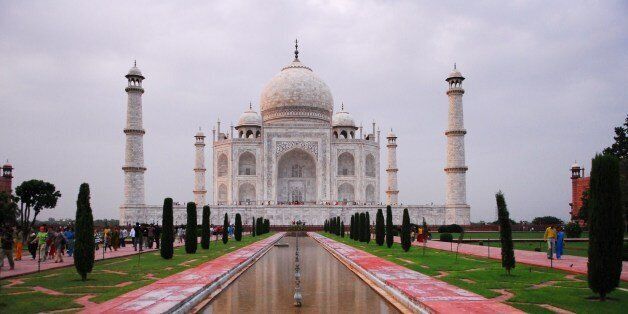
The Archaeological Survey of India (ASI) today declared Taj Mahal and all other monuments under it 'safe' after conducting a detailed assessment in the wake of the devastating quake that wrecked Nepal and reverberated through several states in northern and eastern India.
"We had instructed all our circles in North India to inspect their monuments and report their condition after the Nepal earthquake on April 25. All monuments have been found to be safe," ASI Director General Rakesh Tewari told PTI.
Pointing out that the devastation due to the 7.9 magnitude earthquake was massive, Tewari said, "ASI undertakes a complete assessment of its own monuments" through a quick inspection to see if there is any damage in the aftermath of a disaster.
The ASI DG said the organisation has "no plans to send its teams to Nepal to assess the damage to its cultural heritage", but added that technical expertise could be provided if needed by the neighbouring country.
"It is important to do a comprehensive assessment of physical damage in Nepal's heritage sites, particularly their cultural World Heritage sites and important Hindu monuments.
"Once this assessment is done, the process of reconstruction, rebuilding and restoration can be undertaken.
If necessary, technical expertise can be provided by ASI," Tewari said.
Several of the monuments that were inspected across North India circles are of UNESCO World Heritage and national heritage status and are considered to be of immense historical and cultural importance.
Archaeological experts were worried about the health of the monuments in the country as the April 25 temblor was felt for over a minute at several places.
It was followed by another strong 6.6 magnitude quake and several lesser ones.
Special emphasis was given on Taj Mahal, a UNESCO World Heritage monument built between 1631 and 1648 by Mughal emperor Shah Jahan, which drew over 61 lakh domestic and foreign tourists in 2014.
ASI, Agra circle's Superintending Archaeologist Bhuvan Vikram said, "We conducted a quick preliminary survey immediately after the first shock and were relieved to see no damage to the Taj Mahal. A minute physical survey was undertaken after the second shock on the directives of ASI DG. There has been no damage to the monument."
Lucknow Circle Superintending Archaeologist N K Pathak said his teams conducted physical survey of all monuments in the jurisdiction and pointed out it was quite a task to inspect the tall minarets.
"We were worried about Rumi Darwaza, built by Nawab Asaf-ud-Daula in Lucknow in 1784. It is in alarming condition, but nothing happened to it. The 'tell-tale glass' strips that we use to monitor cracks in the monuments were also fine and did not shatter after the quake," Pathak added.
ASI Superintending Archaeologist of Patna Circle H J Naik has also reported that the protected monuments in Bihar and Jharkhand were completely safe after the temblor.



Contact HuffPost India